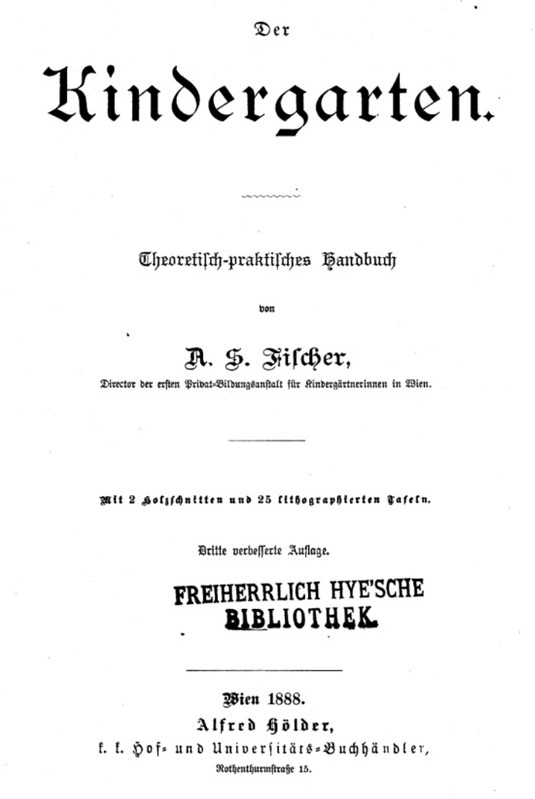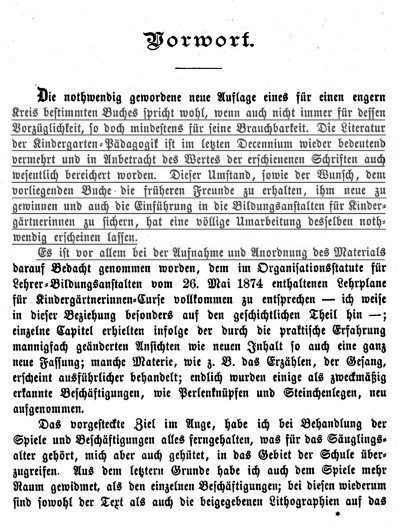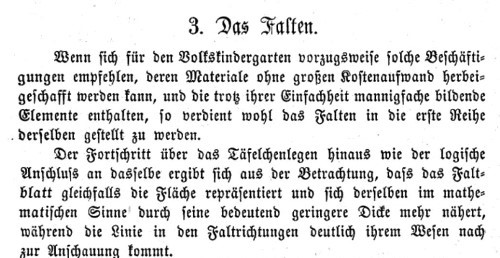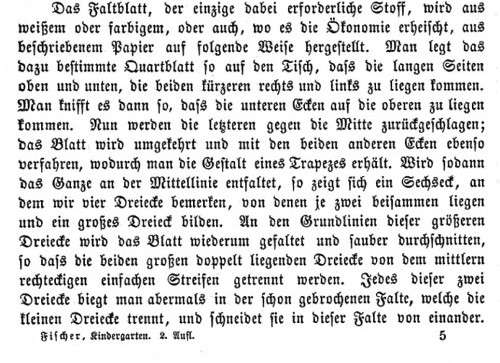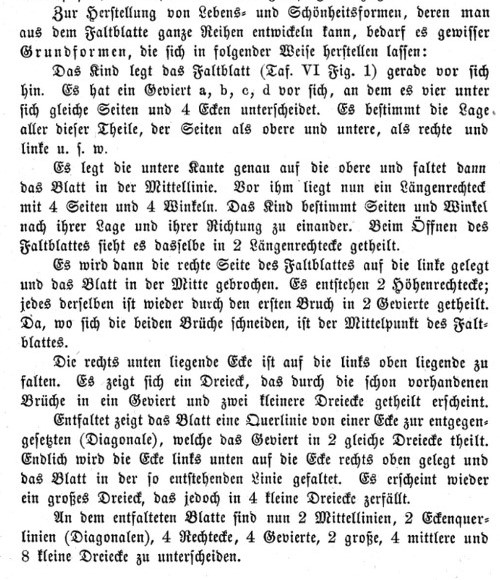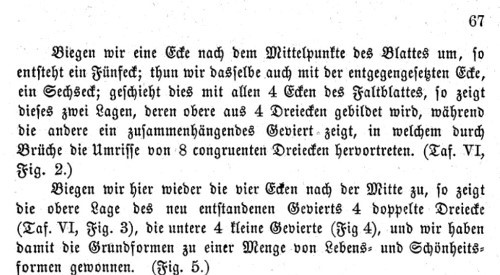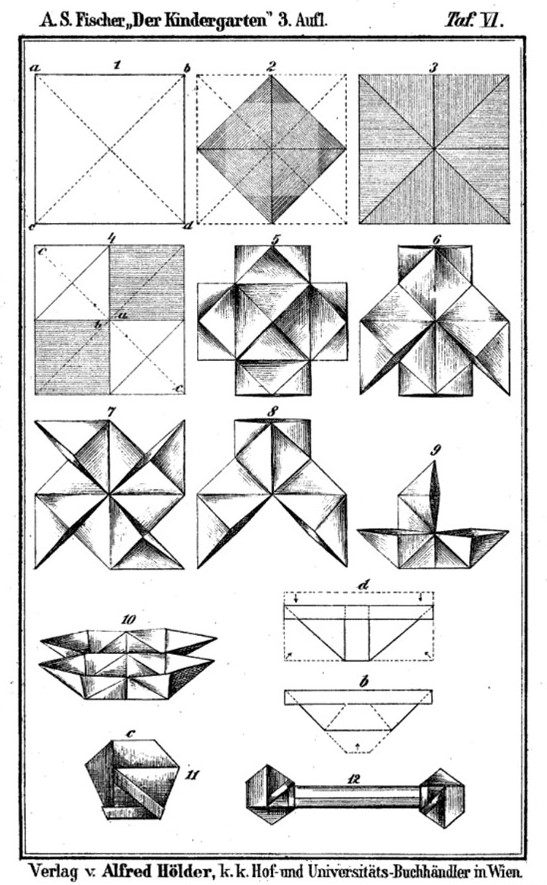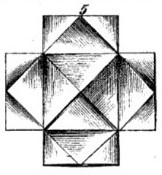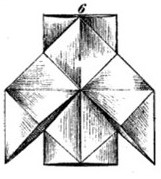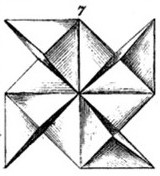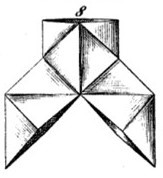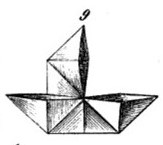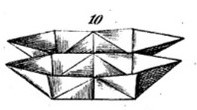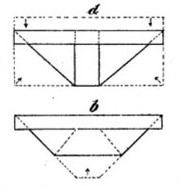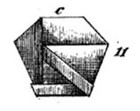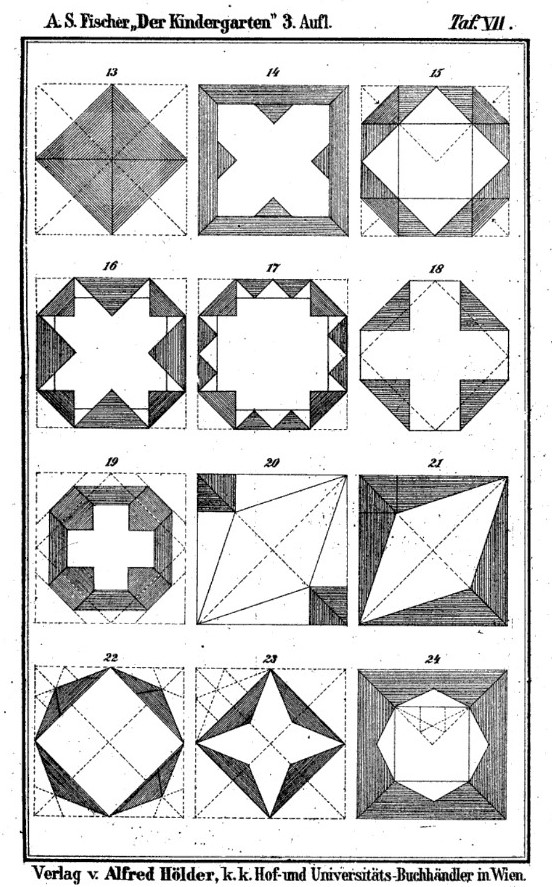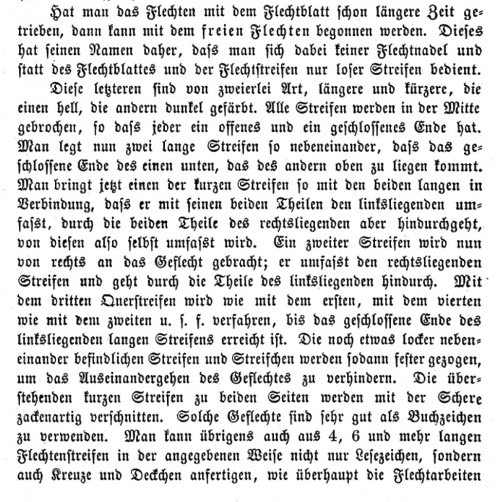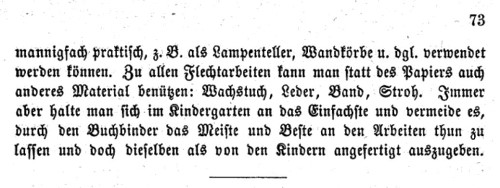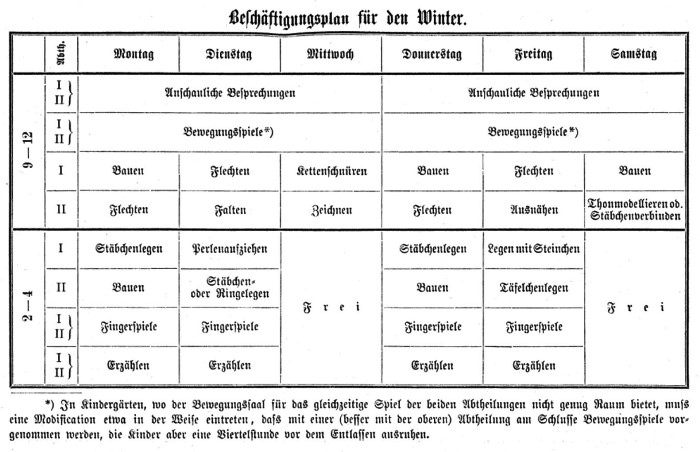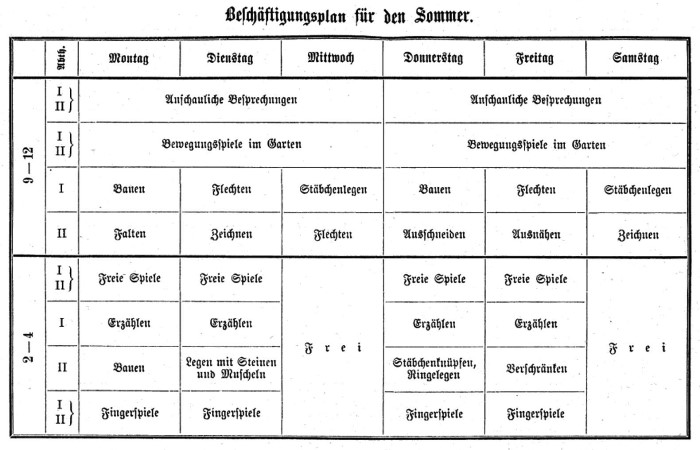| The Public Paperfolding History Project
Last updated 15/3/2024 x |
|||||||
| Der Kindergarten: Theoretisch-Praktisches Handbuch by A S Fischer, 1883 | |||||||
The second edition of 'Der Kindergarten: Theoretisch-Praktisches Handbuch' by A S Fischer was published by Alfred Holder in Wien in 1883. The paperfolding material about folding from strips in the first edition has been omitted and new material added about Falten, Ausschneiden und Aufkleben and Flechten. There is also a table showing how these occupations could be included in the timetable in both Winter and Summer. A full copy of the second edition can be accessed online here. A third edition was published in 1888 but the paperfolding material in that edition was the same as in the second. **********
********** Note that the underlining is not in the original. The second paragraph says that: 'particular care has been taken to fully comply with the curriculum for kindergarten teachers contained in the organisational statutes for teacher training institutes of 26th May 1874'. In the second to last paragraph the author explains that he has departed 'even further from the orthodox Froebelian approach' and that he has, inter alia, 'completely eliminated cut-outs'. His defence for this is that: Froebel's pedagogy is as much in need of development as it is capable of development, and that his system ... will only gain general recognition through individual reforms while maintaining the basic principles.'
********** Analysis Das Falten This Analysis includes the full text of the 'Das Falten' section.
********** Froebel's method of cutting four squares from a rectangle
********** Despite giving Froebel's method of cutting squares from a rectangle the author then says: 'To save the time and effort of making folded sheets in the manner described, and also to have precisely cut folded sheets, it is advisable to purchase those that are machine-made from good writing paper. If one wishes to use coloured paper, choose so-called 'natural' paper, which shows the same colour on both sides.'
*********** Erkenntnisformen The word 'Erkenntnisformen does not appear in the work, but the author describes the folding sequence necessary to arrive at the Double Blintz Basic Form (Fig 3) and the Triple Blintz Basic Form (in progress in Fig 4).
********** Lebensformen - Forms of Life The author says: 'Describing the creation of the forms is extrememly difficult. The only way of learning how to represent them is through observation in kindergarten.'
********** Einen Orden - The Cross
********** Eine Jade - The Jacket
********** Windmuhlflugel - The Windmill
********** Eine Hose - The Trousers
********** Eine Kahn mit Hauschen - The Boat with Sail
********** Einen Doppelkahn - The Double Boat
********** Einen Generalshut - The Mitre
********** Eine Pennal - The Pencil Case
********** Schonheitsformen - Forms of Beauty Fig 13 appears to represent the Double Blintz Basic Form from which all the other forms can be developed. The shading does not differentiate the two surfaces of the paper but just different elements of the design to make thge folding structure clear.
********** Das Ausschneiden - Cutting Out The author gives an explanation of Froebel's occupation of Ausschneiden und Aufkleben including that all pieces should be used in the mounting phase but does not give details of any individual designs. Instead he prefers to concentrate on the free-cutting of simple symmetrical shapes, first following pre-drawn outlines and then freehand (in which the paper is NOT folded in half to help the pupils achieve symmetry).
********* Flecten - Weaving The main part of this section is a description of Frame weaving, but then the author goes on to describe the free weaving technique. He says: 'Such braids are very well suited for use as bookmarks but also crosses and doilies from 4, 6 or more long braiding strips in the manner described'. No instructions for specific designs are given.
********** Timetables
********** |
|||||||
